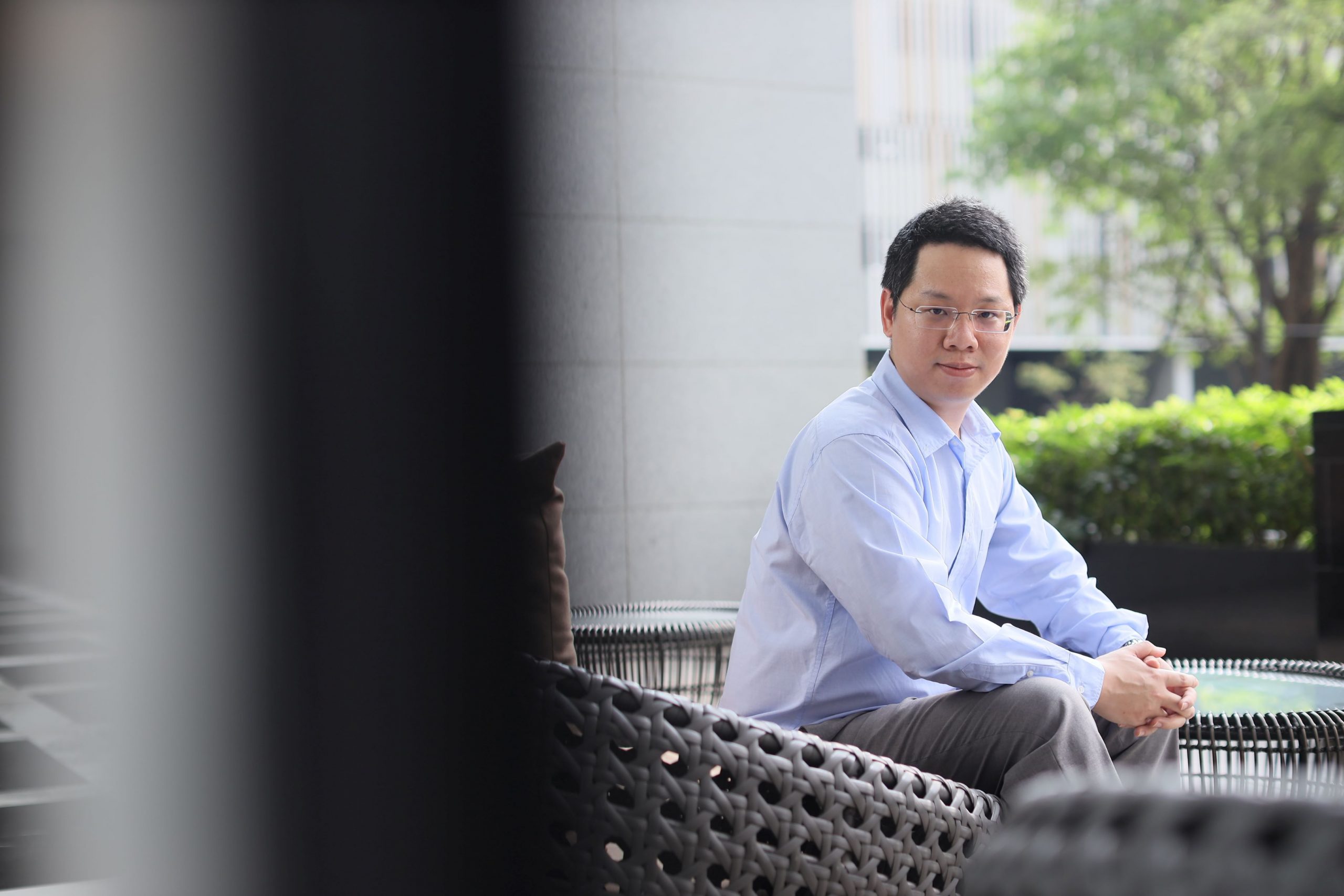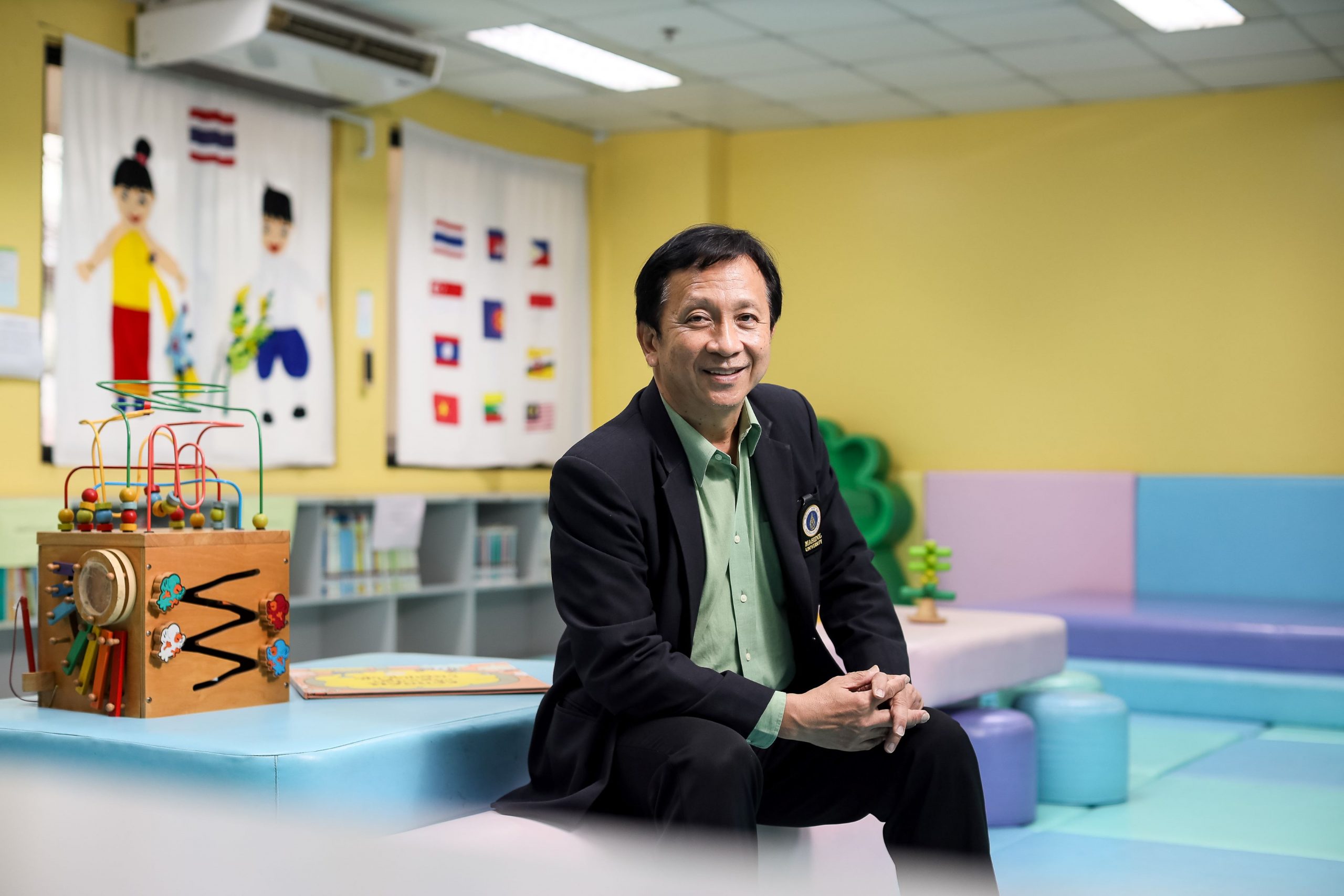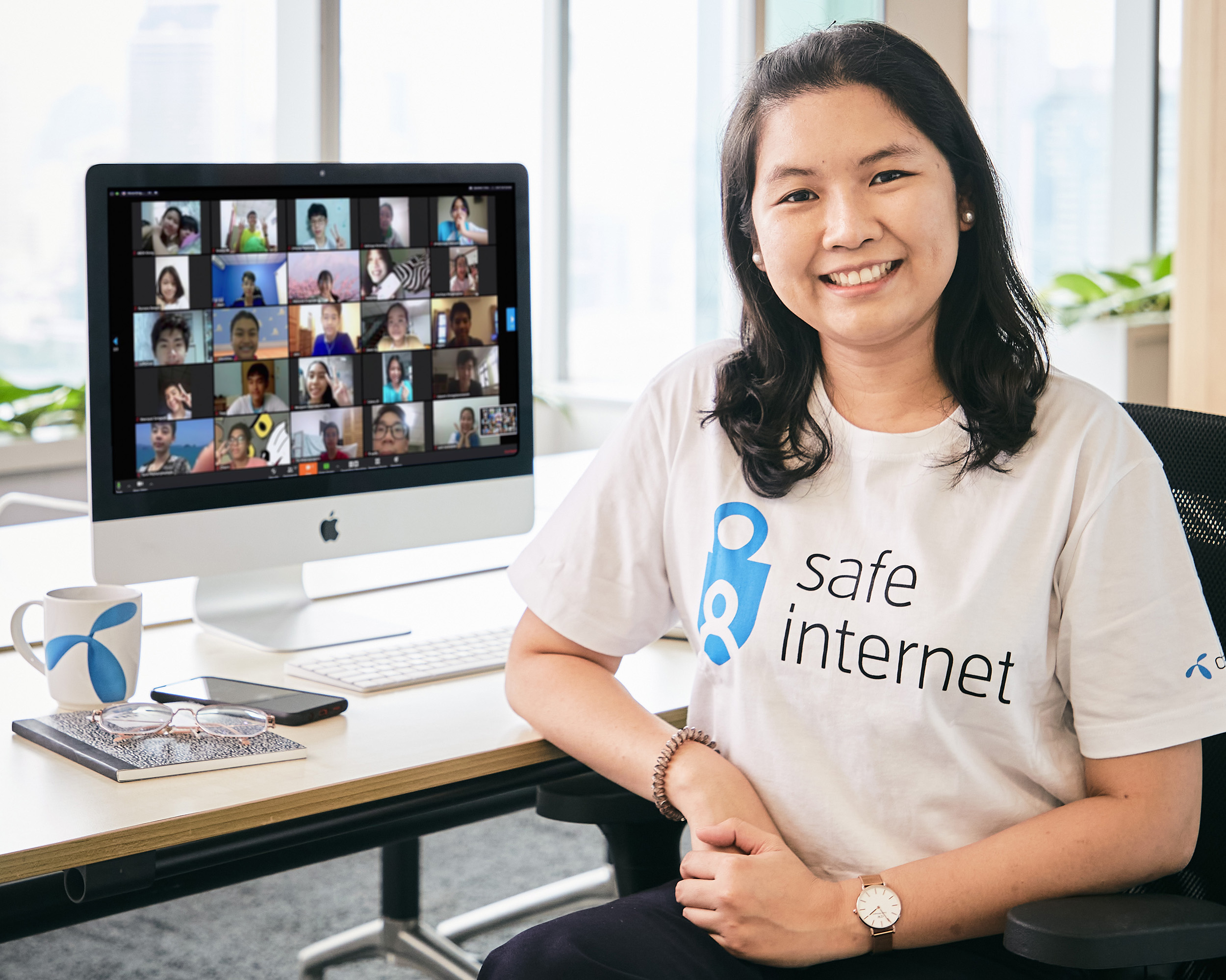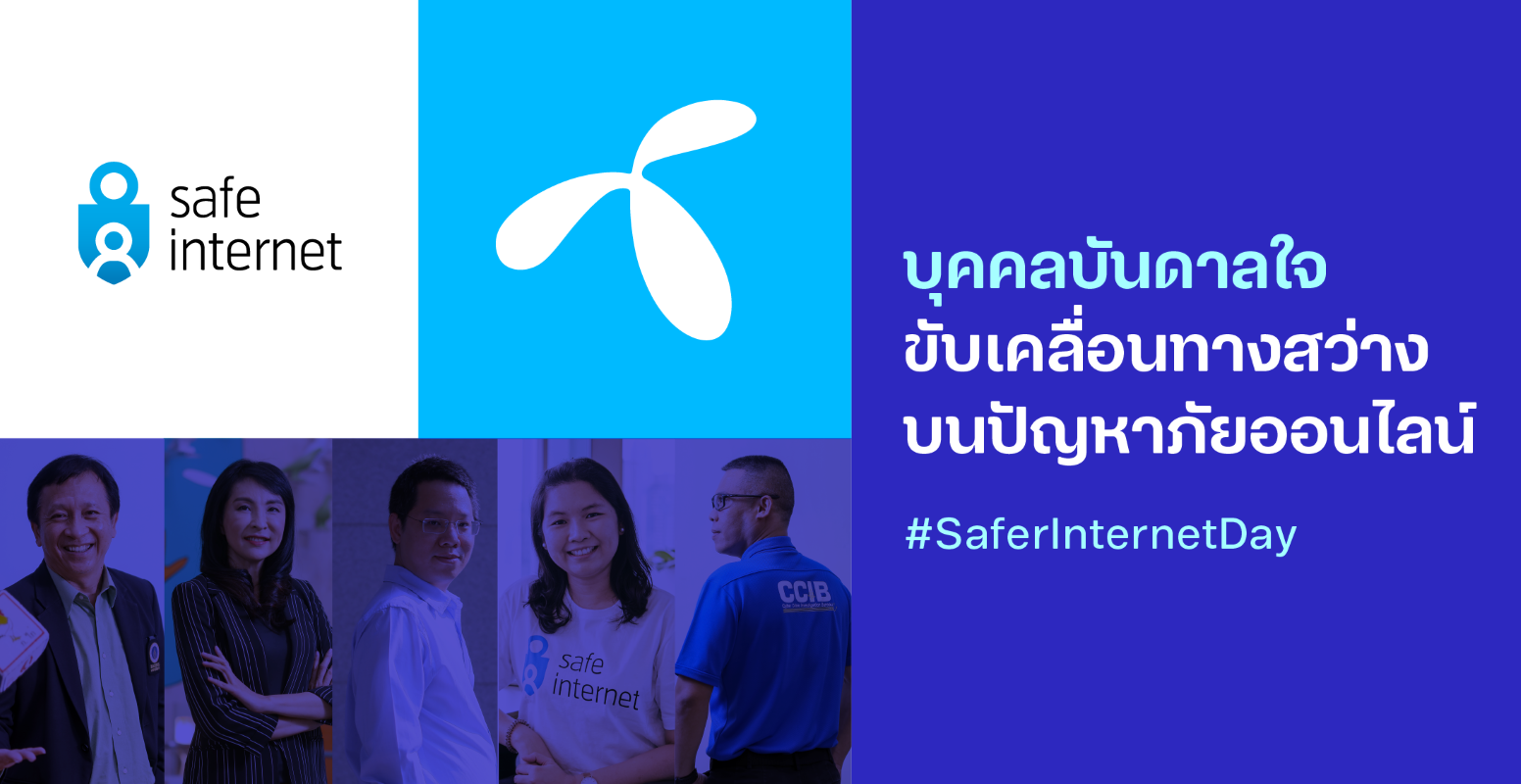Safer Internet Day is observed every year on Tuesday of the second week of February with the aim of raising awareness of the importance of internet safety and calling upon all stakeholders to join together to make the internet a safer and better place for all, especially for children and youth. This year it falls on the 8th of February 2022.
The dtac Safe Internet initiative, now in its 6 year, is committed to building digital resilience for schoolchildren through various platforms including the Young Safe Internet Leader Camps and the 72-hour crowdsourcing platform where teenagers came together to devise solutions against cyberbullying.
To celebrate this occasion, dtacblog spoke to five social partners of dtac Safe Internet who fight against hidden threats in the online world to keep children and youth safe.
Pol Col Morakot Saengsakoo: The guardian of young hearts
A police officer who is taking care of the broken hearts of children who have been abused by adults, Pol Col Morakot Saengsakoo is one of the Thailand Internet Crimes Against Children (TICAC) Task Force and a speaker on Online Privacy & Sexual Abuse in a course over dtac’s Young Safe Internet Cyber Camp.
He recalls that his mission had begun with the investigation of a case that followed a hint in an email message from an embassy that there was an offender in possession of child pornography. He collected 25 pictures of children as evidence, some of which were taken a long time ago with some of the victims having now grown up and who came to share their stories.
That event created his enthusiasm for wanting to protect and to guard children in his own family and in society so he became part of the TICAC Task Force since 2015 and has worked seriously in the group since 2016 having how prosecuted in more than 300 bases and having helped over 200 children.
“Our team found that problems have been changing and there were now more cases. Before Covid-19 there had been 100,000 cases discovered by the AI system per year but since the first three months of the pandemic there were over 100,000 cases and for an entire year this surged to 400,000 cases, with the number having tripled after Covid. As for the Internet and social media, things that used to be ‘hidden’ or concealed are showing up, images are more easily conveyed and predators have been able to reach children more easily as well,” he said.
Targeted children were previously 13 to 14 years old, but now this has moved down to children under 5-6 years old, while access to victims still uses the principle of “intimidation”, “blackmail” and “trust”.
What he wants all parties to push for, especially at the policy level, is to have laws down to the “roots” that make deterrence even better, such as the “Grooming Sexual Abuse Child Preparation Act” that several countries already have, and to propose a “child centric approach”, which considers the ultimate benefit of a child and respects child rights. This is to free the victims from the vicious circle and to relieve the trauma. As being discovered during interviews, most offenders have experienced some forms of abuse before.
“Digital literacy is a vaccine to immunize children and related parties like parents while law enforcement must update its knowledge and keep up with apps or new technology,” Pol Col Morakot said. “The private sector, such as dtac, can help promote the safe use of the Internet and work together with law enforcement and relevant stakeholdesr to protect children from online risks.”
Dr. Srida Tanta-atipanit, Manager of Internet Foundation for the Development of Thailand. Creating a safe online digital world.
Dr. Srida Tanta-atipanit began her career as a Master Degree student in computer science and worked at the National Electronics and Computer Centre (NECTEC) that pioneered Internet usage in schools through the SchoolNet project which promoted technology evolution from when it was a dial-up Internet to a high-speed wireless Internet. She is experienced in the safe Internet, having worked non-stop with the Internet Foundation for the Development of Thailand for 28 years.
She recalled a problem two decades ago when teenagers in the United States broadcast the release of the “Virgin Open” (a sex movie) which shocked Buddhist people and the government found a way to block the content which revealed “the dark side of the Internet.” This led her to work to reduce the impact of inappropriate content for children or young people, whether it be fraud, pornography, scams, gambling, gaming addiction, cyberbullying or other such content.

In addition, she wrote a book about online dangers, encouraging the use of Parental Control software, educating children to beware of online strangers, addressing cyberbullying management, the notification of incidents and encouraging the use of the Internet in a positive way with partners and agencies that provided budgetary support. She also shares knowledge with multi-disciplinary partners, being physicians, nurses, psychiatrists, law enforcement investigators, social workers, and government agencies. Dr. Srida sees that work integration provides effective and proactive protection to build digital literacy.
At the policy level, comprehensive legislation, the drafting of which has been in progress for more than three years, needs to be pushed to close loopholes such as “Sex Tortion” and online grooming to address current issues such as tricking children into revealing their sex organs or showing them over a webcam which is a form of pornography that is physically occurring.
Online threats to youths have been enabled by technology and the number of cases that AI has detected has increased threefold to 600,000 cases a year, including temptations from chatting to live sex streams. The posting of pornographic images was originally done through web hosting and hidden over the dark web but now it is more dynamic and is done by people setting up their own servers, creating a dedicated group, or even doing it through the cloud, making investigations more difficult to do due to budget constraints and the lack of personnel.
“As one of the pioneers of a safe Internet and a good online well-being, I have seen many improvements but there are still delays in many issues of concern. Working with partners to assist children, helping then to avoid problems, is good karma and is a charity derived from work which drives me to continue pushing policies. The mission to build a safe Internet is an issue that every stakeholder needs to collaborate around for a better Internet, such as the theme of Safer Internet Day 2022,” Dr. Srida said
Chitpong Kittinaradorn: The birth of three companions — Chatbots for Thai children
Chitpong Kittinaradorn is an innovator from ChangeFusion, a social innovation organization, who graduated in economics but who became a chatbot developer who cares for and heals abused children, teaching them skills to navigate the online world and online threats.
By seeing the popularity of chatbots that have been used to answer commercial questions over the past few years, he sees that they can be used to make a social impact and as a tool to solve problems for children and youths and he has developed three chatbots, which are:
- Maikham: A chatbot that can reply to questions about cyberbullying.
- Jaidee: A chatbot that can be friends for children of all ages.
- MySis: A chatbot that provides advice on domestic violence issues.
Moreover, chatbots will help children who don’t know whom to consult or share their stories with. They also assess users’ reactions by providing a questionnaire and with tens of thousands of users of these chatbots, 70-80% of them have said that they were “fairly useful” or “very useful”.
Currently, still in development is a new version of the Jaidee platform at https://chatbotjaidee.com that includes Maikham in a website format that will be independent and will be displayable on mobile phones, being more flexible and sustainable. The new version will be launched in April and will use “Crowd Sourcing” with information about experiences in 10,000 cases from undisclosed children with diversity in gender, age and geographical locations.
The Jaidee chatbot will be like a database intermediary that will bring a “Crowd Sourcing” experience from those who have experienced problems and have found the solution as a “guide” for the younger ones, making them feel that they are not alone in the world

“We try to make a balance for maintaining confidentiality and privacy while providing proactive measures that will help protect children. The information provided by the chatbot needs to filter some data that can harm or be at risk for children by maintaining privacy and anonymity and not revealing the identity of the data providers.” he said.
For users who are at risk of suicide from depression, the chatbot will return actionable data in the form as phone calls that the children can make — similar to the MySis chatbot — that will be transferred to the Cyber Crime Investigation Bureau as a communications channel so that children facing violence can notify cases to cyber police.
There will also be e-learning information for teachers to learn and manage each type of problem with sample activities to teach their students. In addition, in the future, Jaidee will be a hub that provides unique diversity by cultivating a variety of issues of interest to young people, including finance.
“In order to develop social innovation technology, the principle is to be user-centric and to focus on how to make a useful impact on a wider society. Technology is a tool that can help us identify dangers and learn from them” he said.
Dr. Adisak Plitponkarnpim: The guardian gowns of Thai youths
Dr. Adisak Plitponkarnpim, the Director of the Child Safety Promotion and Injury Prevention Research Center of the Faculty of Medicine at Ramathibodi Hospital, sees child safety changing in line with the economy, society, the environment as well as science and technology. He sees the upcoming of the Metaverse that creates an immersive experience that is unexpected, which, even if it is not involving physical contact, will affect changes in the body. The clearer the picture and the sound, the more the stimulation of behavior, both in the body and the mind.
In the early days when computers and the Internet first became a part of our lives, computer games brought joy to children. However, in the long run this creates problems of addiction, where more children are suffered from toxic stress which leads to depression. Hence, he designed a campaign to educate children in primary schools that risk comes with happiness.

“In children under 13, adults need to build a safe online environment and allow them to learn until they grow old enough to make their own decisions,” he said.
Later, online social media became more widespread and edutainment clips on smart phones became the first medium or the first images that six-month old children would see, which was different from in the past when it had been a doll or other toy which stimulated sight and hearing. It was found that the use of these media in young children was causing them to develop autism and to lose their communications skills with humans. So the center, together with the regulator, the NBTC, and other associations, created a campaign to educate people not to allow children aged two to five years old to use electronic devices.
“When we design or offer online products and services, we should consider social issues, not just look at profits or sales and overlooking any negative impacts that they may cause. And we should not pass the burden of responsibility solely to families,” he said.
Jaruwan Puangphaga: Activist safely connects the online world
When the Internet world can be beautiful with our handiwork
Jaruwan Puangphaga graduated in accounting but her work experience had been in sustainability and CSR since she had been a university student. “This has been my personal preference since I was a student who wanted to do activities that have a social impact,” she said.
Today, Ms. Jaruwan is the Project Manager of dtac Safe Internet who has been working in the Corporate Communications and Sustainability section of dtac. Responsible for Digital Inclusion under sustainability, she has been one of the country’s pioneers and over the past three years has created social awareness about cyberbullying until today this has become a widespread issue that everyone pays attention to.

dtac has divided the digital inclusion taskforce into two key areas, which are “Net for Living” that creates skills to generate income, especially for vulnerable groups such as the elderly, and the creation of health through the Internet (Safe Internet) for Thai youths in primary schools and secondary schools. In addition it has been raising awareness of Fake News and the ability of AI and social media to create an Echo Chamber where we only see and receive opinions similar to our own. Later we created a Cyber Camp to train and create youthful leaders, providing creative knowledge over the Internet, building Chatbots and tools for content creation that are useful in addition to creating a safe environment.
The main focus of dtac this year is on “Cybersecurity,” ranging from hackers to data protection, cyber fraud scams and virtual abuse — new ways that hunters lure victims to come to “the road to the stars” to lure people to become influencers or celebrities that make children share their personal data and intimidate them with various indecent threats, all of which are getting closer all the time.
In addition, dtac also focuses on working at three levels:
- The first level is building capacity, with training to provide knowledge in preparation to build cyber immunity.
- The second level is creating knowledge for those who are around children, in particular teachers and parents, and providing broad communication such as about gender diversity to stop bullying that has been happening over the past three years and to educate teachers about this since teachers are one of the people that children would like to ask for help if there is a cyber bullying problem.
- The third level is working as a voice that drives policy, especially to propose a cyberbullying law. Previously, dtac launched a “Why we Bully?” campaign to collect children’s opinions to resolve the cyberbullying problem. This was a proposal from children and not a top-down order from adults. Gender diversity is key, as is appearance, and not that just being thin and white counts as good-looking, while the selection of students as representatives in schools should go beyond appearance and sexual diversity should be part of the education curriculum.
dtac and partners have worked together to reach over 300,000 students countrywide and have built a network that shows us productive developments. Even though this is still a small grouping we believe that it will create a major change in the future.
Because of her hard work and continuity it has been possible to see improvements in the attitudes of children from being “victims” to being “big change makers in the online world”. This evolution serves to drive Jaruwan in her day-to-day work. Finally, she says with a smile: “I hope to see a good culture in the online world with mutual respect and an online etiquette similar to that which we have in the real world.”
#SaferInternetDay #dtacSafeInternet

